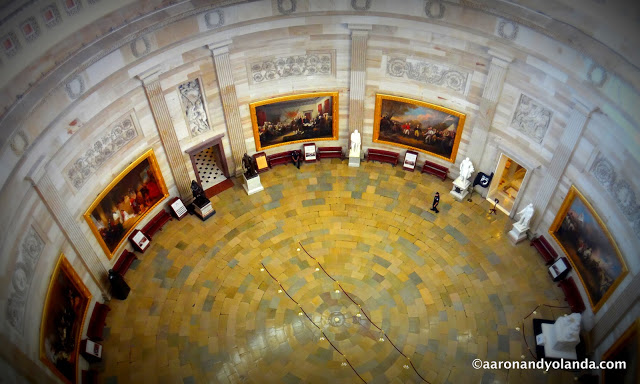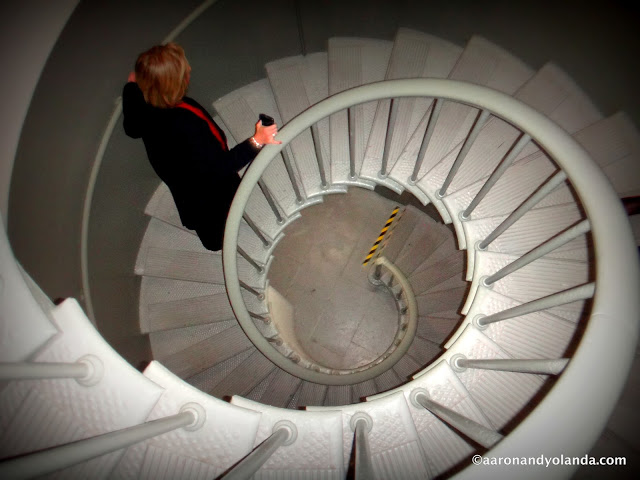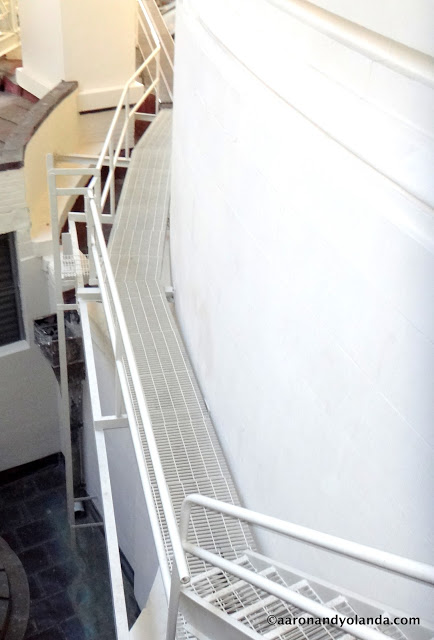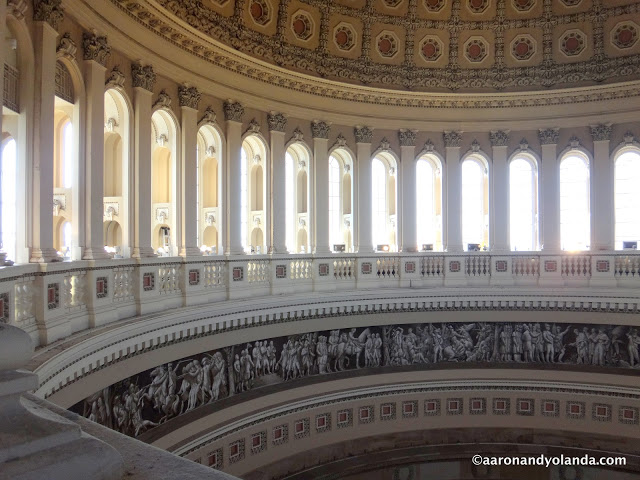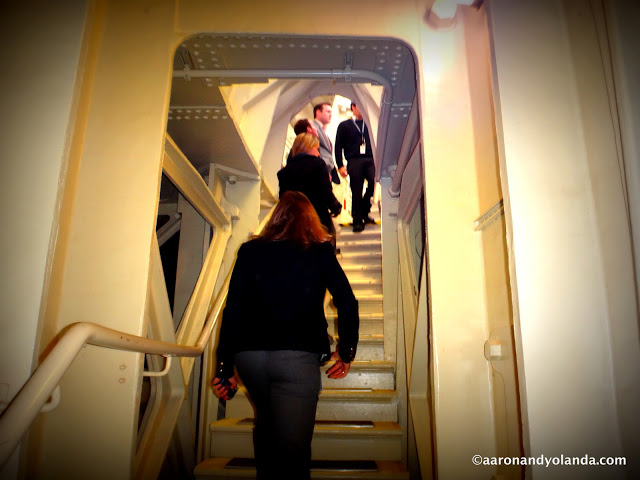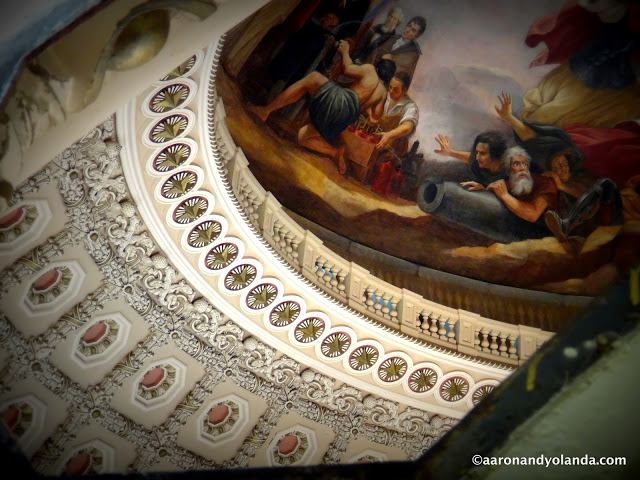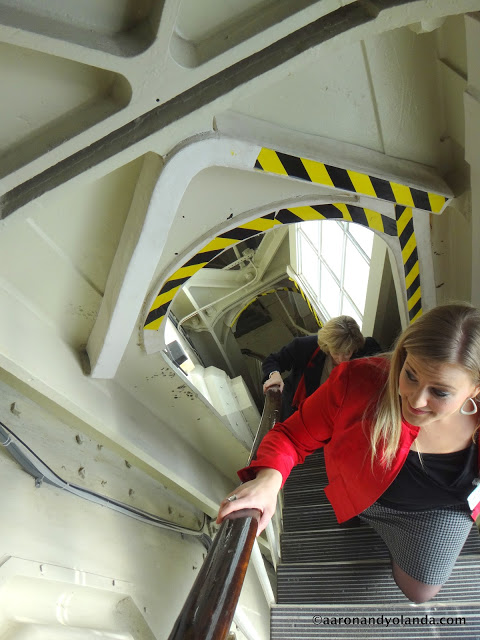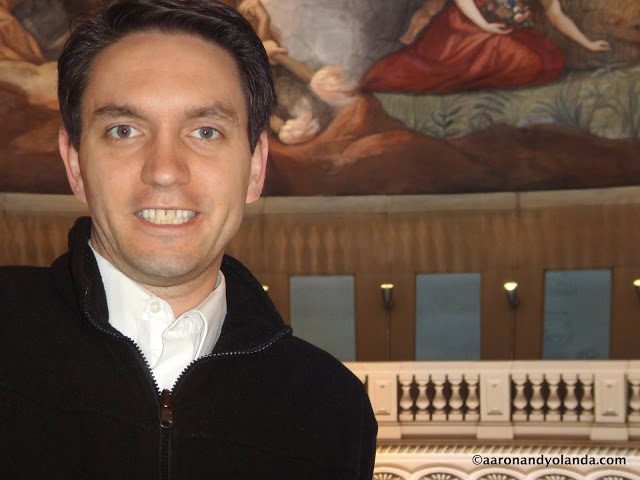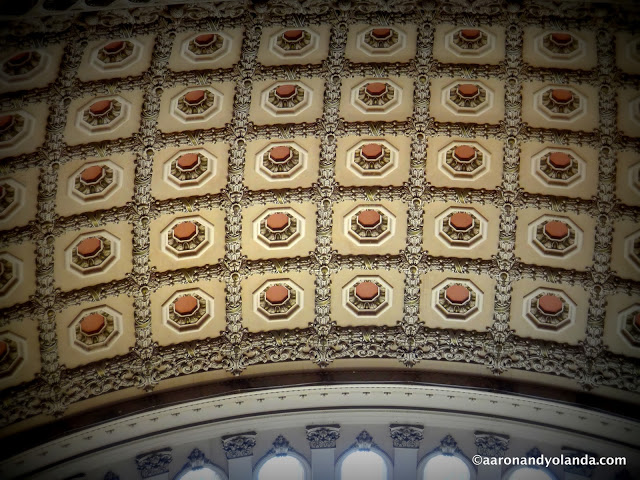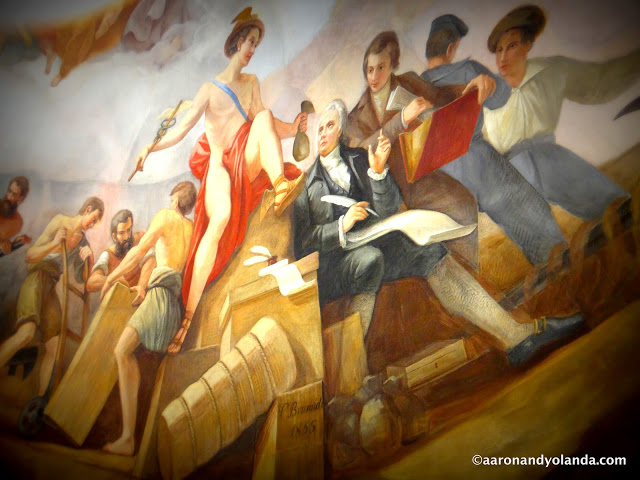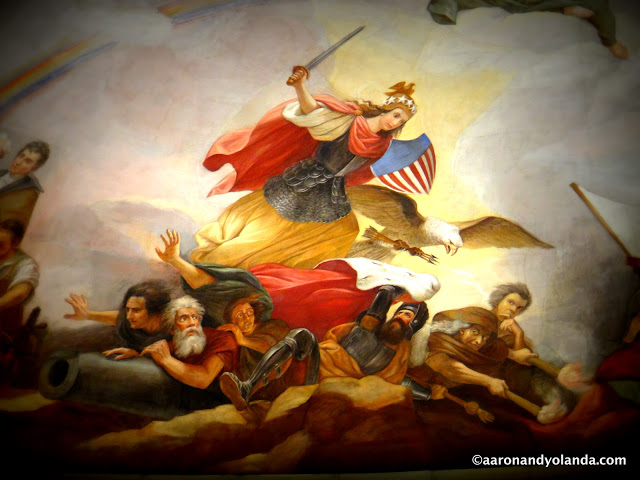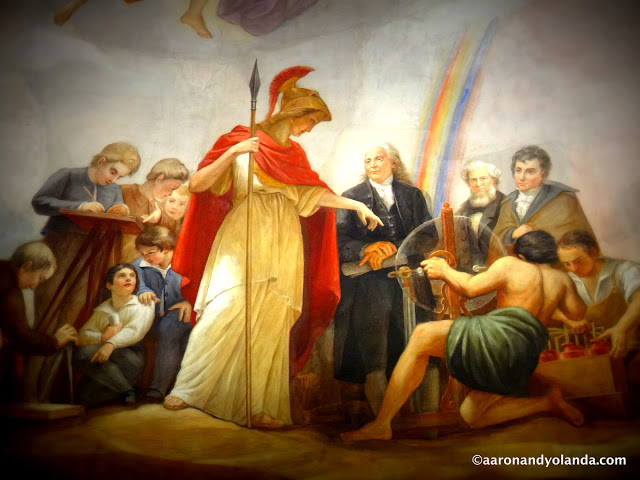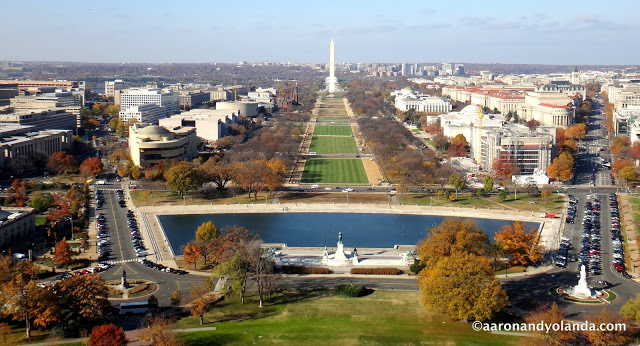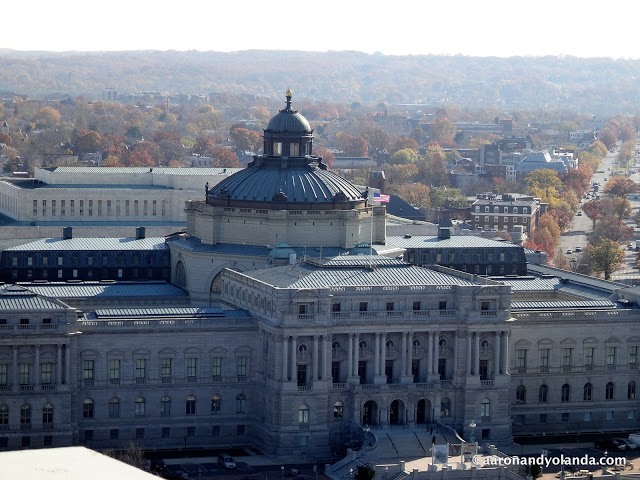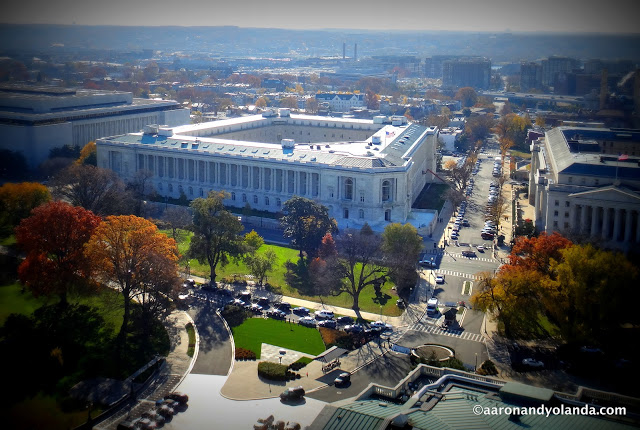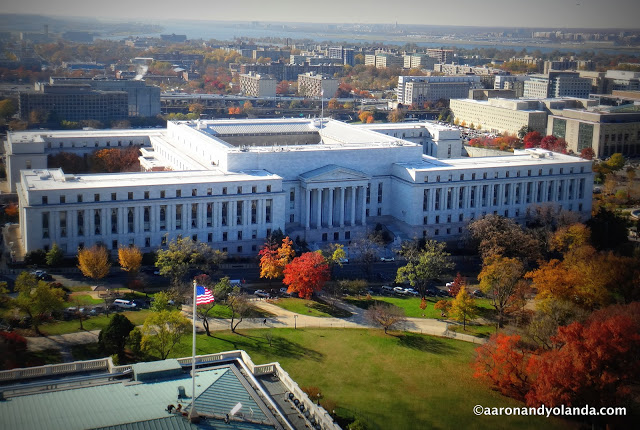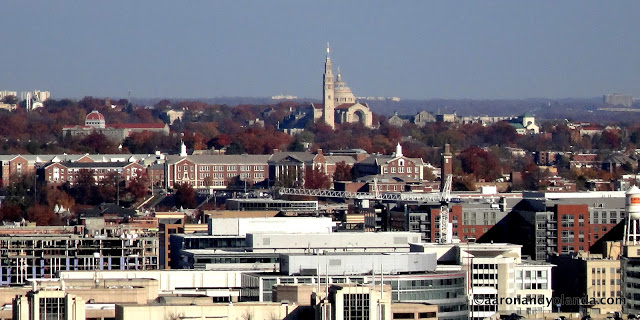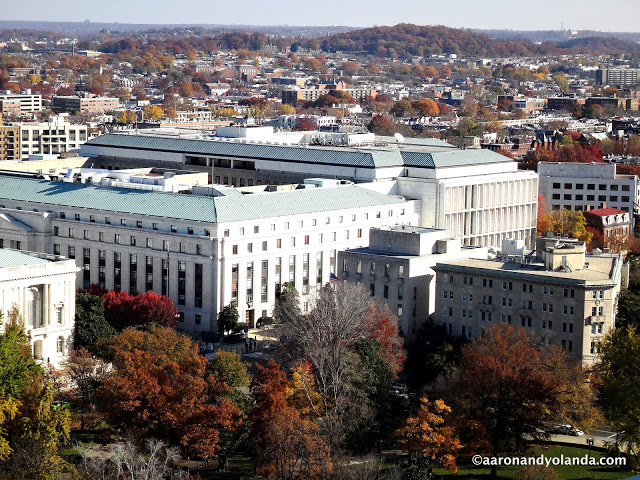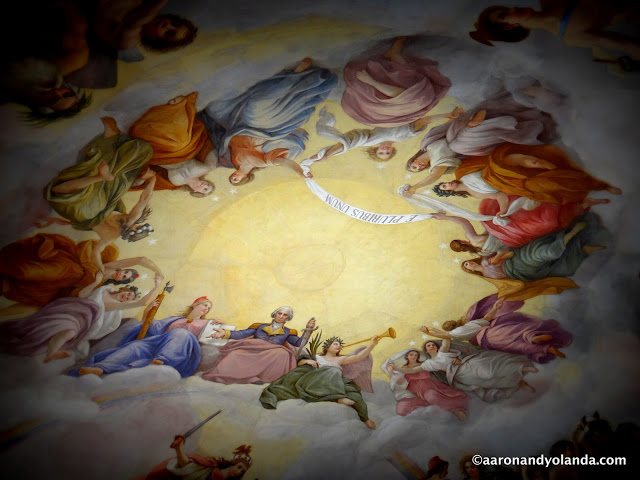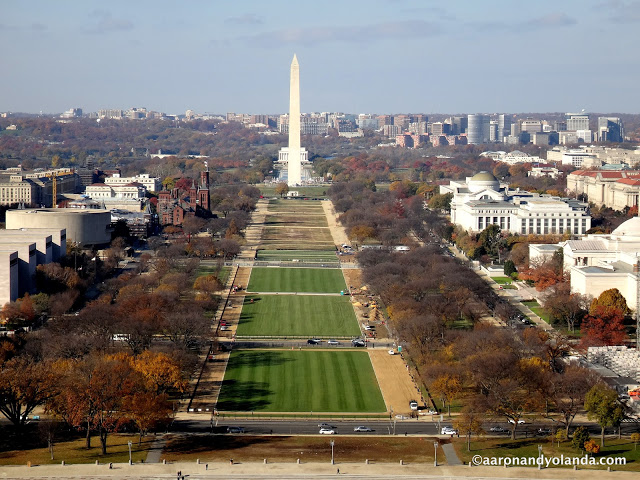“We defend and we build a way of life, not for America alone, but for all mankind.”
On Friday, Aaron got us tickets to tour the Capitol Hill Dome. While most people know about tours of the Capitol building and that they are readily available, it is not widespread knowledge that there is a separate tour of the Capitol Dome. Don’t despair. Although it takes a bit of time and some effort, you can find yourself climbing LOTS of stairs and enjoying a breathtaking view of the dome and the city laid out below.
Contact your congressional member’s office to find out how to get on this tour.
To begin the tour, you start in the crypt, go up some Senate stairs, and then begin your trek up to the top of the dome. Aaron says there were at least 200 stairs, if not more. I was unable to go as I had another appointment at the same time. So, I gave Aaron a camera and assigned him the task to take photographs. I think he did a pretty good job! For more of Aaron’s gorgeous pics, see Aaron’s Asian Adventures. He outdid himself in China!
Alright. Back to the Capitol Dome Tour. Since I did not go on this tour, and all I got out of Aaron when I asked him about it was, “It was great!”, I am going to borrow heavily, if not completely, from the Architect of the Capitol’s description of the history of the dome. I will however fill this post with most of Aaron’s photos 🙂
Ready. Set. Climb.
Walk around a platform on the outside of the dome.
And, voila! Now for some history. (Text borrowed from the Architect of the Capitol in a different font.)
The U.S. Capitol’s dome made of cast iron was designed by Thomas U. Walter and constructed from 1855-1866. Finished at the total cost of $1,047,291, the dome was constructed with 8,909,200 pounds of ironwork bolted together in a masterpiece of American will and ingenuity.
It was designed by the Philadelphia architect Thomas U. Walter, who was also the architect of the House and Senate extensions. Montgomery C. Meigs, a captain in the Army Corps of Engineers, was the principal superintendent of construction. Together they oversaw the creation of the Capitol’s most memorable and remarkable feature.
The U.S. Capitol’s first dome was finished in 1824 to the design of Charles Bulfinch, a Boston architect who was bringing the building to completion after more than 30 years of sporadic construction. Bulfinch’s low dome was constructed of wood covered by copper. Light was admitted through an oculus. By the 1850s, this dome was considered too small for the vastly enlarged Capitol Building. It was also a fire hazard and was in constant need of repair. For these reasons, a new fireproof dome was considered a necessary and practical improvement to the Capitol.
Climb up some more stairs.
On December 16, 1854, Walter hung in his office a drawing of the U.S. Capitol as it would appear once the extensions were finished, but without the Bulfinch dome. Instead the drawing showed a new cast-iron dome with columns, pilasters, brackets, scores of windows and a crowning statue. While it was only a suggestion of what a new dome might look like, the drawing caused an immediate sensation among Congressmen and Senators who visited the Architect’s office. Within 10 weeks, without committee hearings and after little debate, the House of Representatives appropriated $100,000 to begin construction of a new Capitol dome. The Senate agreed a few days later, and President Franklin Pierce signed the legislation on March 3, 1855.
And peep out of an oculus at the ceiling. Almost there!
Work on the dome progressed at a rapid pace in 1857. Nearly all the columns of the peristyle were set on brackets embedded in 5,214,000 pounds of masonry built on top of the old Rotunda walls. In 1858 work slowed to a crawl due to conflicts between Walter, the architect, and Meigs, the supervising engineer. Walter refused to hand over drawings because Meigs often changed them without consultation. Meigs retaliated by refusing to approve the pay of Walter’s draftsmen. While progress on the dome suffered, the dispute allowed time for Walter to revise the original design of the upper parts of the dome. The revisions had become necessary because of the statue that was commissioned for the top of the dome, the size of which was significantly larger than originally anticipated.
And, needless to say, but yet another set of stairs!
The speed with which the new Capitol dome was authorized was unprecedented. On the strength of a single drawing Congress committed itself to one of the most ambitious undertakings in the history of American architecture. Although some Members thought the $100,000 would cover the entire cost of the work, Walter knew it would only get the job started and that the place to begin was at the drafting board, where details would be worked out over the next few months.
Bulfinch’s wooden dome was removed in the fall of 1856. A temporary roof was installed over the Rotunda to protect it during the construction project. A wooden scaffold standing on the Rotunda floor passed through the eye of the temporary roof and held a boom and derrick that would lift, by steam-powered engines, the ironwork into place. The steam engines were fueled by wood salvaged from the old Capitol dome.
Made it to the top!
Walter’s original design called for a statue 16 feet 9 inches tall. When the model of the statue was finished in the studio of Thomas Crawford, an American sculptor working in Rome, it stood 19 feet 6 inches. Walter was obliged to lower the overall height of the dome in order to broaden the platform that would carry the tholos, which, in turn, carried the statue. The revisions lowered the height of the dome from 300 feet to 287 feet. Walter also took the opportunity to redesign the interior, devising the double dome scheme based on the Pantheon in Paris, which he had seen in 1838.
In the fall of 1859, Meigs was replaced by William B. Franklin as engineer in charge. A few weeks after taking his post Franklin received a proposal from the New York foundry of Janes, Fowler, Kirtland and Company. The firm proposed to finish all remaining work on the dome for 7 cents per pound “complete and put up.” The offer was accepted in February 1860, placing the work under a single contract. Due to this arrangement, construction of the dome was uninterrupted by the outbreak of the Civil War in 1861. While work stopped on the Capitol extensions for a year, the dome continued to rise above the Rotunda.
Here are some of the paintings on the ceiling of the dome. Incredible detail! You can even see the name of the artist painted on the ceiling in the painting below. Can you see it?
And, finally! The breathtaking view of the city from the top of the Capitol dome! Wasn’t this worth climbing all those stairs?? I am glad Aaron did this tour and not me. Not right now. My creaky joints would have been louder than the tour guide’s voice and that would have made for an unpleasant experience for all involved.
Anyway, isn’t this a spectacular view of the Washington Monument??
More views of the city.
On December 2, 1863, the last section of the Statue of Freedom was put in place on top of the dome amid a great celebration with military salutes. The interior of the dome was finished in January 1866 when the scaffolding was removed from below Constantino Brumidi’s great fresco, the Apotheosis of Washington, 180 feet above the Rotunda floor. Walter resigned on May 26, 1865, and was succeeded by Edward Clark, who completed the last details of the dome.
Washington is in the purple and gold coat at the bottom of the picture wearing his powdered wig with an arm outstretched.
One last view from the top. Hope you enjoyed the tour!

